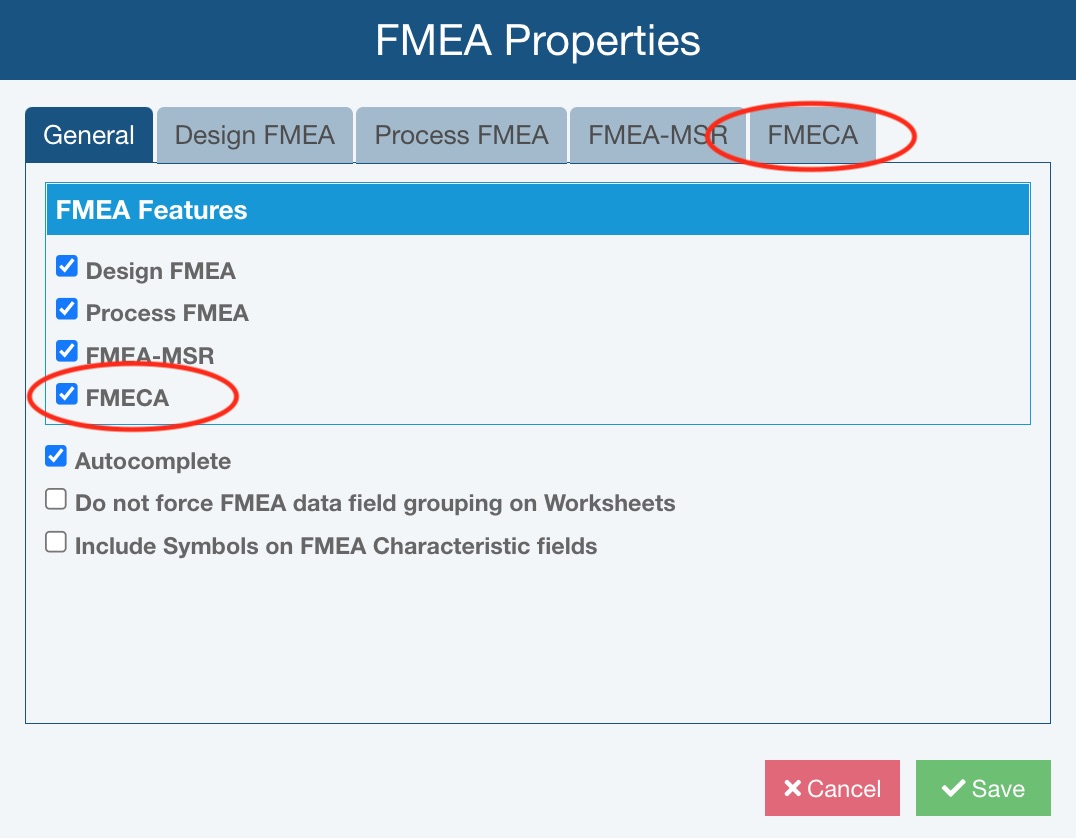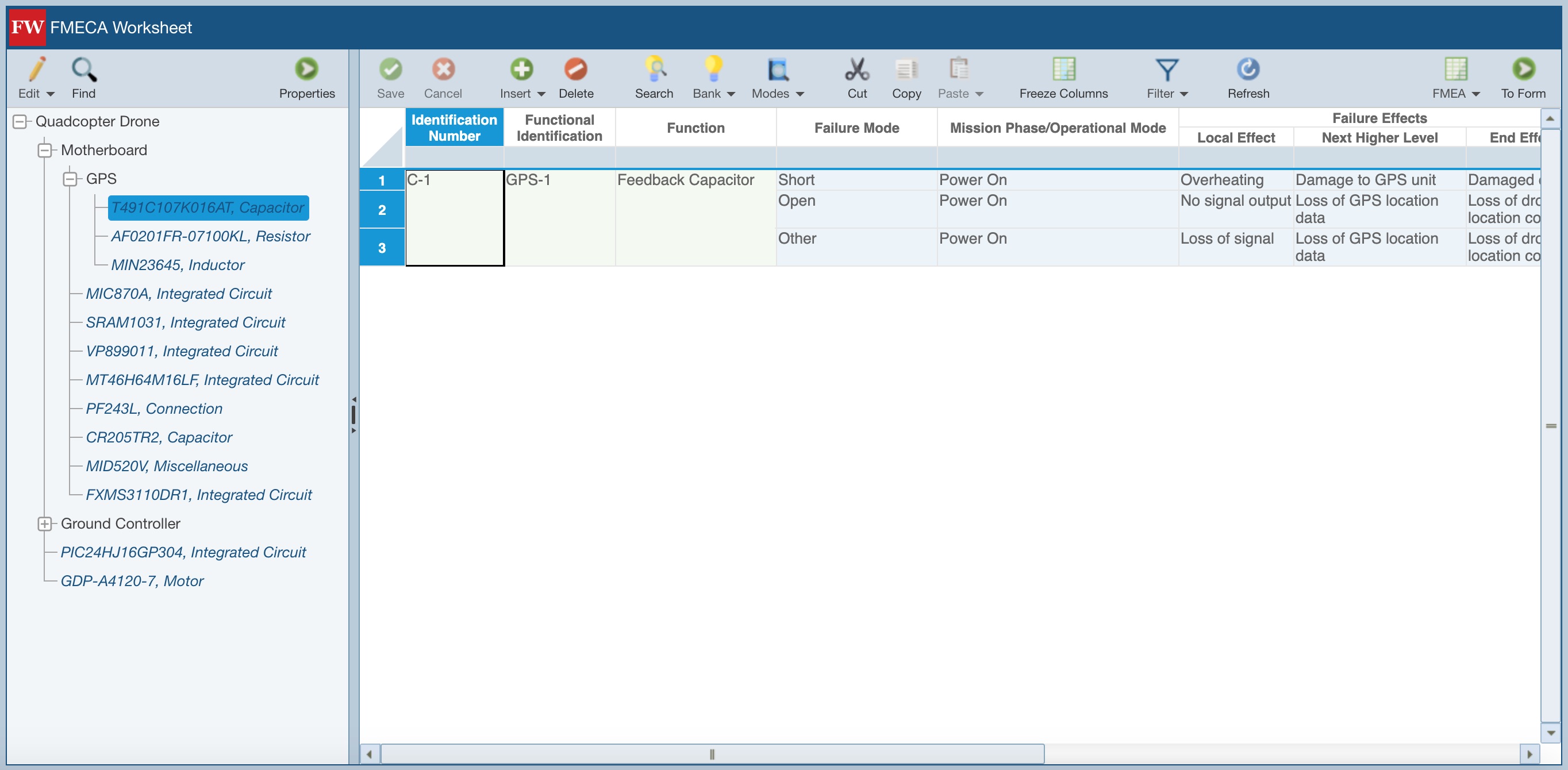Performing a FMECA
Relyence FMECA contains one main element, the FMECA Worksheet.
Note: By default, FMECA is not enabled by default in all Analyses. If you have an Analysis where you do not have the FMECA option in the Sidebar, see the Adding a FMECA Worksheet to an Analysis section for details how to enable FMECA in the Analysis.
Adding a FMECA Worksheet to an Analysis
To add a FMECA Worksheet to your Analysis, make sure your Analysis is open and FMEA is active by clicking FMEA in the Sidebar menu if needed.
Click Properties in the Sidebar menu.

The FMEA Properties dialog appears. Select FMECA. If you want to perform a piece-part FMECA, select Piece-Part. For more information about performing Piece-Part FMECAs, see the Using the FMD Library topic. Click Save to save your changes.

Click FMECA that now appears in the Sidebar menu under the FMEA heading. The FMECA Worksheet appears for you to begin your new analysis.
Typically, FMECA in Relyence FMEA is a two-step process: you build the Analysis Tree (if applicable), then complete the FMECA Worksheet. This typical scenario is described in this topic.
Step 1: Build the Analysis Tree (optional)
You may choose to employ some type of hierarchical structure to organize your FMEAs. Any such structure is created in the Analysis Tree pane. In FMECA, the Analysis Tree can be used to define the product's hierarchical structure. You can also use the Analysis for any purpose in order to help with ease of management and team collaboration.
Each element in your tree has a separate FMECA Worksheet associated with it.
For more details, see the The FMEA Analysis Tree topic.
Note that the FMD Modes Library can be used to help enter Failure Modes and Mode Percentages automatically based on the type of part. For more details, see the Using the FMD Library topic.
Step 2: Complete the FMECA Worksheet
The FMECA Worksheet is where you consider all functions, potential failure modes, and their effects, causes, and actions.

The following steps are used to complete the FMECA Worksheet for each Analysis Tree item:
Note: It is from the Insert button that you can add Functions and Failure Modes, as well as FRACAS Failure Data. Relyence FMEA also offers Autoflow functionality which allows you to define criteria to allow for records to be created and/or data fields to be populated. For more details about Autoflow in Relyence FMEA, see the FMEA Data Autoflow topic.
- For each Function, identify important details such as Identification Number, Functional Identification, and Function.
- For each Function, verify or identify all the potential failure modes in the Failure Mode field.
- For each Failure Mode, assign the Mission Phase/Operational Mode.
- For each Failure Mode, list the Failure Effects in the Local Effect, Next Higher Level and End Effect.
- For each Failure Mode, define the Failure Detection Method, Compensating Provisions, and Severity Class.
- Change the FMECA Worksheet View to Criticality Analysis as needed and enter key details such as Failure Effect Probability and Operating Time. Results such as Failure Mode Criticality and Severity can help identify the most critical potential failure modes.
- Using the criticality values as a basis, develop an action plan. Your action plan defines which line items in your FMECA you want to work on to either mitigate or eliminate in order to maintain your quality objectives.
- Continue to update and rework your FMECA until you are confident all your high priority issues have been addressed.